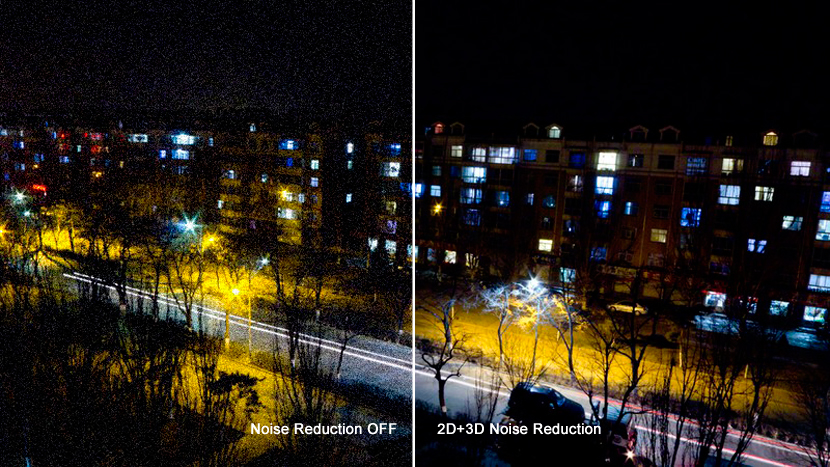SECURITY CAMERA - 2D/3D DIGITAL NOISE REDUCTION (DNR)
When we look at security camera's specification, we will find some technical terms such as 2D-DNR, 3D-DNR, although we know these technologies can greatly help improve imaging quality, few people know the detail. In this article, we intend to provide you the comprehensive information related to current noise reduction approaches which have been implemented in security camera.
1# What's image noise?
Let's discuss the basic term - noise. Any electronic device transmits or receives a signal will generate noise, it's inevitable. Noise is a by-product of image capturing of video cameras. Generally, the higher resolution cameras are more susceptible to noise. The reason is image sensor is smaller and thus able to collect less light, more likely making errors when converting light to electric signals. According to Vivotek white paper, for any camera, low-light conditions will result in higher noise levels. Because image sensor may amplify signals along with noise in order to compensate for the lesser amount of light collected by sensor elements.

2# Noise reduction approaches
Simply increase the illumination may allow your camera capture noise-free image, but sometimes ideal lighting is impossible for many video surveillance applications. Since the image noise affects image quality, reducing noise while preserving salient details is top priority for security camera manufacturers. They devote to reduce noise in the video captured by CMOS and CCD image sensors. There are various hardware and software based noise reduction technologies have been developed in recent years.
3# What's 2D/3D digital noise reduction
2D/3D-DNR stands for 2 dimensional/3 dimensional digital noise reduction. These noise reduction technologies can be divided into two categories - Spatial and Temporal.
Spatial noise reduction: Analyze individual frames of video, using special algorithm filter to mitigate the effects of noise.
Temporal noise reduction: Analyze frames in sequence to differentiate pixels that likely represent noise.
| Spatial | Temporal | |
| Noise detection mechanism | Analyze single frame individually to distinguish pixels that likely represent noise. | Analyze frames in sequence to differentiate pixels that likely represent noise. |
| Advantages | Does not produce motion blur. | Very effective at reducing noise |
| Disadvantages | Less effective at reducing noise than temporal noise reduction. May produce some blurring of object edges. | Creates motion blur if there is movement in the processed area. |


4# 2D+3D integrated approach
Due to both noise reduction approaches have pros and cons. It's better to combine both technologies together. Some of cameras may not apply them simultaneously, but simply offer a choice of one or the other. But please note that simply offering an option to switch between the two types of noise reduction is less than ideal since single frames of video may encompass statis areas as well as areas where movement is taking place.

5# Benefits of noise reduction
So, what's the benefit of noise reduction? The noise reduction can not only improve the image quality when security cameras work in low light conditions, but also reduce the file sizes of captured video, the reduced file size decreases storage needs, also reduce the bandwidth requirement for video streaming. In summary, the benefit of noise reduction is:
- Improve image quality for better object identification
- Reduced file size for lower bandwidth and storage requirements
- Fewer false alarms for video motion detection
Security cameras with advanced noise reduction technologies are the optimal choice for both indoor and outdoor surveillance especially in low-light conditions. The 2D/3D digital noise reduction can eliminate noise from the video to help identification of persons and car plate license numbers event at night. So that, when you want to monitor a poorly lit facilities such as parking lots, warehouse etc, you may choose to use security cameras with strong noise reduction capabilities.
Please kindly note that this articel copied from https://www.unifore.net/analog-surveillance/security-camera-2d-3d-digital-noise-reduction-dnr.html

评论
发表评论